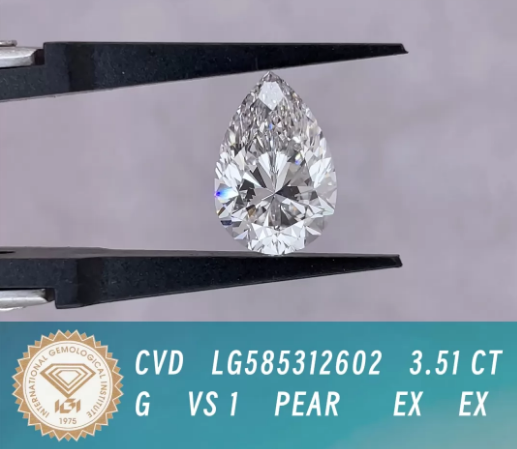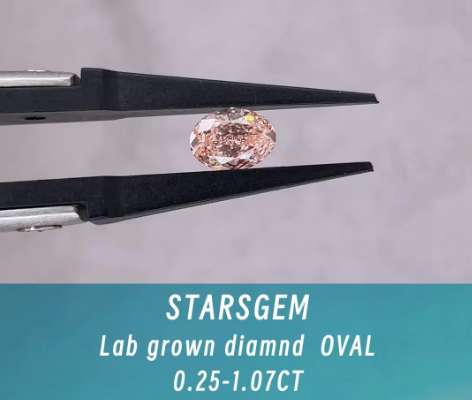Lab-grown diamonds go by various names such as cultured diamonds, man-made diamonds, or synthetic diamonds, but they all represent a significant shift in the diamond industry.
Essentially, they are diamonds cultivated within a laboratory setting. Utilizing advanced technology, these labs emulate the natural processes responsible for the formation of diamonds found in the earth. The outcome is a lab-created diamond that mirrors mined diamonds in terms of chemical composition, physical attributes, and optical properties.

Are They Real Diamonds?
In unequivocal terms, yes. Lab-grown diamonds are indeed genuine diamonds.
The comprehensive explanation lies in the Federal Trade Commission's (FTC) definition of a diamond as pure crystallized carbon within the isometric cubic system, irrespective of whether it originates from the earth or is cultivated in a laboratory. The FTC's rationale behind this definition is rooted in the identical chemical, optical, and physical properties shared by both lab-grown and mined diamonds. Consequently, crystallized carbon meeting these criteria is universally recognized as the gemstone known as a diamond.
Lab-grown diamonds are exact replicas of their naturally occurring counterparts in every aspect. They exhibit identical qualities and characteristics, including:
- Chemical Composition: C
- Crystalline Structure: Cubic
- Refractive Index: 2.42
- Dispersion: 0.044
- Hardness (MOHS): 10
- Density: 3.52
Therefore, whether sourced from the earth or cultivated in a laboratory, a diamond remains unequivocally a diamond.
The HPHT (High Pressure High Temperature) Lab Diamond Growing Method
The HPHT (High Pressure High Temperature) method stands as the original technique for producing lab-grown diamonds, with gem-quality HPHT diamonds emerging in the 1950s. Beyond diamond cultivation, HPHT processes also serve to enhance diamond color, allowing for the creation of colorless, pink, green, blue, or yellow diamonds.
To foster the growth of an HPHT diamond, a small diamond seed is positioned within carbon, the fundamental element constituting diamonds. The diamond seed undergoes exposure to extreme heat and pressure, mirroring the natural underground formation of diamonds by the Earth. Temperatures soar above 2,000 degrees Fahrenheit while the pressure reaches about 1.5 million PSI (pounds per square inch). As a result, the carbon melts and crystallizes around the seed, eventually cooling to form the diamond.
Rough HPHT diamonds develop distinctively from rough CVD diamonds. HPHT diamonds take on a cuboctahedral shape during their growth, whereas CVD diamonds assume a cube-like structure.
HPHT diamonds often exhibit a yellowish tint due to exposure to nitrogen during their formation process. Additionally, these diamonds tend to contain darker, metallic inclusions. These metallic inclusions are instrumental in differentiating lab-grown diamonds from their naturally formed counterparts because naturally occurring diamonds rarely encapsulate metals during their creation.
The presence of metallic inclusions in HPHT diamonds can render the stones magnetic. This magnetic property serves as another indicator of a diamond being lab-grown, as natural diamonds lack magnetic characteristics. A study conducted in 2012 revealed that more than half of the tested HPHT diamonds displayed a noticeable magnetic response.
Occasionally, HPHT diamonds may display a "blue nuance," imparting a subtle blue hue to the diamond.

Are HPHT Diamonds Real?
Absolutely! HPHT-grown diamonds are indeed authentic diamonds and will register as such when subjected to a diamond tester. Those cultivated through the HPHT method in a laboratory are indistinguishable from natural diamonds in terms of their chemical composition, physical attributes, and optical properties.
The CVD (Chemical Vapor Deposition) Lab Diamond Growing Method
The CVD (Chemical Vapor Deposition) method, developed in the 1980s, represents a more recent innovation compared to the HPHT method. Mimicking the formation process in interstellar gas clouds, CVD employs lower pressure and smaller machinery than HPHT.
In the CVD process, a diamond seed is positioned within a vacuum chamber. This chamber is then filled with carbon-rich gases and heated to nearly 1500 degrees Fahrenheit. The high temperatures convert the gas into plasma, releasing carbon fragments that gradually layer onto the diamond seed, fostering diamond growth.
One distinctive feature of the CVD process is the production of Type IIA diamonds, a rarity among naturally occurring diamonds. This characteristic aids in distinguishing between lab-grown and earth-mined diamonds. Type IIA diamonds are chemically pure, lacking nitrogen and/or boron impurities commonly found in HPHT diamonds. Unlike HPHT diamonds, CVD diamonds do not possess magnetic properties.
Are CVD Diamonds Real?
Certainly! Indeed, diamonds cultivated using the Chemical Vapor Deposition (CVD) method will unmistakably test as diamonds. Lab-grown diamonds produced via the CVD technique mirror natural diamonds in their physical, optical, and chemical composition.
Similarities and Differences Between CVD & HPHT
Understanding the fundamentals of each technique may prompt the question: how does this impact the diamond received, and are there observable distinctions between these methodologies?
Color Distribution: CVD diamonds typically exhibit a more consistent color distribution and often achieve superior levels of clarity and color compared to HPHT diamonds. While earlier HPHT diamonds were prone to a yellowish hue due to nitrogen presence, advancements in the technique have mitigated this tendency.
Fluorescence: Both HPHT and CVD diamonds frequently display fluorescence, a UV-induced glow. Despite common misconceptions, fluorescence does not impact a diamond's appearance under normal lighting conditions and doesn't affect its grading. HPHT diamonds often show more fluorescence than CVD counterparts, but it can occur in both.
Graining: HPHT diamonds manifest graining patterns reflective of their growth structure, while CVD diamonds lack discernible growth patterns.
Inclusions: While both types may contain inclusions, they originate differently. CVD diamonds might possess dark pinpoint inclusions, while HPHT diamonds can develop metallic flux inclusions.
Strain Patterns: CVD diamonds display banded strain patterns, whereas HPHT diamonds usually exhibit minimal to no strain patterns. Notably, naturally mined diamonds often display strain patterns as well.
Apart from internal characteristics, price discrepancies exist. HPHT diamonds are generally pricier due to the more intricate, time-consuming process involved. While both types are less expensive than natural diamonds, CVD diamonds are typically more budget-friendly. Interestingly, some CVD diamonds undergo HPHT treatment to refine their color, benefiting from the greater control offered by the HPHT process.
In Summary
In the realm of gemstones and jewelry, the debate between CVD and HPHT-grown diamonds lacks a definitive victor. Both techniques yield stunning diamonds that stand on par with natural, mined diamonds across the Four C categories. Distinguishing between these diamonds with the naked eye is impossible, as it requires specialized equipment and expertise to detect their dissimilarities.



 Lab Grown Emerald
Lab Grown Emerald



